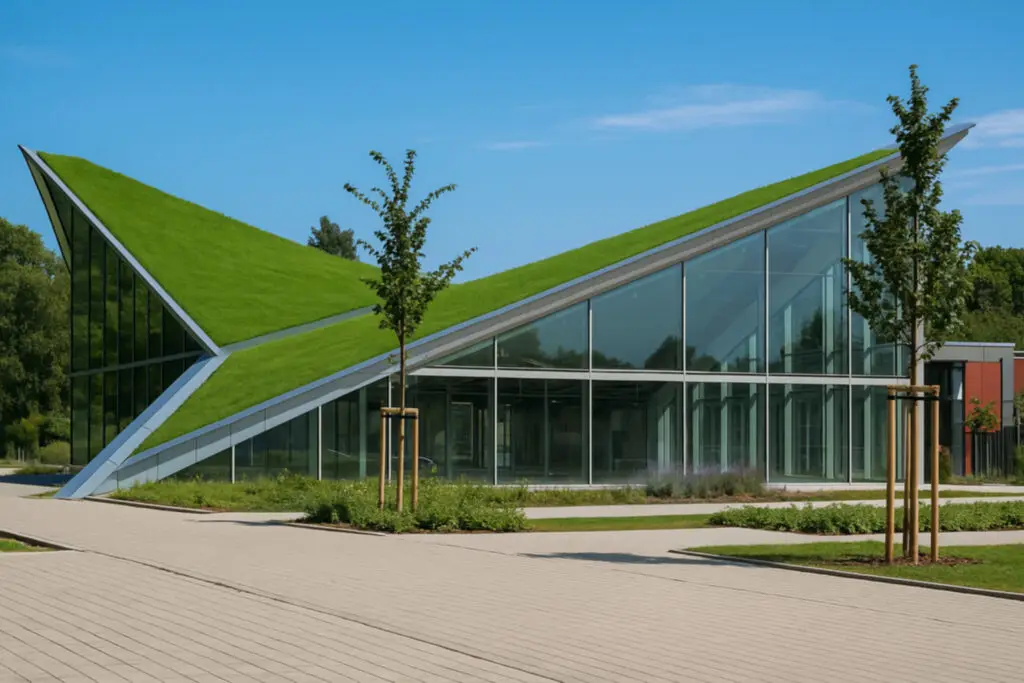Green Infrastructure Modern QandA

Green Infrastructure Modern QandA, building Sustainable and distills practical answers for planners, homeowners, and students. Here you’ll learn why green roofs cool attics, how permeable pavements curb floods, and which policies fund rain gardens. We use clear language grounded in proven examples, so you can act confidently. It also highlights economic gains such as energy savings and rising property values.
What is green infrastructure, and how does it differ from grey infrastructure?
Green infrastructure uses living systems—soils, trees, and wetlands—to manage rainwater and climate. Grey infrastructure relies on pipes, culverts, and concrete tanks that move water away quickly. Green systems mimic nature by catching rain where it falls, filtering pollutants, recharging groundwater, and cooling nearby air. Grey systems skip these ecological benefits. Many cities now blend both approaches. This Green Infrastructure: Building Sustainable and Resilient Cities FAQ shows living systems add cooling, habitat, and beauty. Combining methods often yields the most resilient results, according to the UN Environment Programme.
Which Green Infrastructure Modern QandA solutions work best for heavy rainfall areas?
Rain-soaked cities need in short, systems that store and release water slowly. Rain gardens and bioswales capture street runoff and let it seep into engineered soils. Permeable pavements allow water to drain through, preventing puddles and ice. Blue-green roofs, pioneered in Amsterdam, hold storm-water in rooftop trays and release it later, cutting peak flows. Constructed wetlands in parks store thousands of liters while offering wildlife habitat. Together, these measures significantly, create sponge-like districts that protect basements and streets from floods. Research on smart blue-green roofs shows they can reduce notably overflow events by up to 70 % (Sustainable Carolina).
How do smart technologies enhance Green Infrastructure Modern QandA performance?
Sensors and Internet-of-Things devices turn passive gardens into active infrastructure. Soil-moisture probes on green roofs trigger valves that drain or retain water based on weather forecasts. Remote-controlled cisterns release stored rain before storms, creating space for new runoff. Biochar-enriched soils boost pollutant removal, while advanced porous concrete increases infiltration rates and durability. Drones and AI already monitor tree health and roof vegetation, spotting stress early. Smart irrigation in conclusion, cuts water waste by responding to real-time data. As highlighted in this Green Infrastructure: Building Sustainable and Resilient Cities FAQ, digital tools make living systems reliable partners in climate resilience (Minnesota Storm water Manual).
What environmental benefits can residents expect from green infrastructure?
Plants shade streets and cool air through evapotranspiration, lowering local temperatures by several degrees. Rain gardens, permeable pavements, and wetlands absorb storm water, easing pressure on sewers and preventing flash floods. As water passes through soils, roots filter oils, metals, and nutrients, improving river health. Green roofs and urban trees create habitat corridors that support birds and pollinators. These living systems also for example, store carbon in biomass and soils, add beauty, and reduce dust. The U.S. Environmental Protection Agency confirms that shaded city surfaces can be up to 25 °C cooler than sun-exposed asphalt (EPA).
How does
Green Infrastructure Modern QandA influence property values and local economies?
Greener streets command to sum up higher real-estate prices because buyers value shade, beauty, and flood security. A rooftop garden can consequently, lift surrounding property values by roughly 11 %, according to EPA studies. Green roofs and tree shade cut energy bills, keeping money in residents’ pockets. Installation and maintenance create steady “green jobs” for designers, installers, and horticulturists. Philadelphia’s program added thousands of projects and spurred local employment while reducing billions of gallons of runoff. This Green Infrastructure: Building ultimately, Sustainable and Resilient Cities FAQ underscores that nature-based solutions pay back through avoided flood damage, lower utilities, and a stronger tax base (EPA).
What community health and safety benefits arise from green infrastructure?
Daily access to trees and gardens lowers stress, improves mood, and encourages exercise. A Texas study found residents near abundant greenery required fewer mental-health services. Trees filter pollutants, reducing asthma cases, while shade cuts heat-related illnesses. Well-kept parks and gardens also deter crime by drawing positive activity and “eyes on the street.” Research across hundreds of U.S. cities linked increased urban greening with lower property and violent crime rates. During heatwaves or storms, green spaces act as cool shelters and water buffers, adding resilience. Together, these factors make neighborhoods healthier, happier, and safer (ScienceDaily).
Which policies and funding models help cities adopt green infrastructure?
Cities embed green standards in building codes and offer zoning bonuses for developers who add green roofs or public rain gardens. Dedicated storm water utilities charge fees for impermeable surfaces and grant credits for on-site infiltration systems, motivating private investment. Grants, tax rebates, and green bonds lower upfront costs. Hamburg’s subsidy program covered up to 60 % of rooftop greening expenses, expanding urban vegetation quickly. Federal funds, such as U.S. infrastructure bills or EU biodiversity programmed, supplement local budgets. Volunteer “adopt-a-rain-garden” schemes reduce maintenance costs and foster stewardship. These combined approaches, highlighted in the Green Infrastructure: Building Sustainable and Resilient Cities FAQ, turn policy goals into thriving pocket parks and flood-safe streets (GBD Magazine).